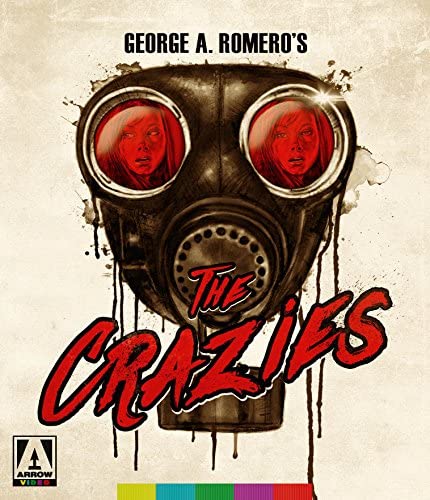
In 1968, George A. Romero made a name for himself and essentially created the zombie genre with Night of the Living Dead. The dead rose from the grave to attack the living, an event whose origin is, at best, speculated upon by the time the credits roll. Five years later in 1973, Romero gave us The Crazies, in which we knew almost immediately what the cause of the madness was, but were less sure how to avoid, diagnose, treat, or save anyone from it.
The film opens with two children, a brother trying to scare his sister by unscrewing light bulbs around the house after dark. Soon they encounter their deranged father who seems set upon killing his entire family and destroying their house. The ensuing house fire cues volunteer firefighters David (Will MacMillan) and Clank (Harold Wayne Jones), along with Nurse Judy (Lane Carroll) to spring into action. Nobody knows what’s going on, and when the army seizes Judy’s office, establishes a perimeter around Evans City, PA, and tries to round up everyone in town, understandably, the unwitting and uninformed citizenry resist and revolt. David, Clank, and Judy attempt to flee the city.
It might have been enough to chronicle the trek of our protagonists to get out of the quarantine zone, but the film also captures the endeavors of the military to control the situation, the policy-makers to decide a best course of action from afar, and the scientists trying to find a cure for the disease. The fast editing and quick cuts keep the pace brisk, feeling like the throttle never completely lets up over an hour and forty-three minutes. There is also a layer of commentary on who the real monsters are, similar to what Romero was saying with Night of the Living Dead. The Crazies, as they’re known, are not always violent or aggressive — some are delusional, some seem to hallucinate, some are just a little unhinged, making it hard to know what they might do when approached. Will they sing a song and try to dance, flail about madly, or try to stab someone with a knitting needle? You never know.
Contrasting the 1973 film against its 2010 remake for a moment, the remake drops most everything interesting mentioned above. It is solely about a handful of refugees trying to escape the situation. The military is a generic antagonist that only appears when needed. The Crazies are 100% murderous monsters with zero subtlety or unpredictability. There is no meaningful attempt or plot thread around finding a cure. The closest thing we get to political discourse surrounding the situation and its implications is some text on a satellite camera screen. While some elements of the 1973 original may feel dated to modern viewers, if you want a film with some meat on it that will kick you in the gut again and again, the original is the way to go. If you just want cheap, vapid scares, and a quasi-happy ending, see the 2010 remake.
Some of the best bits of the original (which are largely absent from the remake) are examples of ironic or tragic consequences triggered by simple human errors. The army sends a man experienced only in combat to manage a biological crisis because he’s the only one available (or, as he muses at one point, expendable). Critical communications are caught up in heavy-handed security measures that create plot-changing issues as they wear on. The leads of the varying plot threads often get caught up in assigning blame rather than figuring out a best course of action. The military is knee-jerk deployed without the information, resources, or equipment to properly handle the situation. The lead scientist is removed from his lab where he could do the best work in the least time and forced to fly to ground zero and use high school chemistry lab equipment because “orders are orders, sir.” The story is a non-stop cascade of human failure, and the disease is happy to pick up the slack and get rid of us flawed, feeble creatures.
Beyond the story, the new HD restoration of the film looks very crisp, even a little grainy, showing the age of the original film stock. Subtitles and uncompressed audio tell the story as clearly as it’s ever been. New audio commentary with Travis Crawford breaks apart every detail of the film you could possibly want. Romero historian Lawrence DeVincentz revisits memorable settings from the film in modern day Evans City, PA, where they were originally shot, and discusses what the film has meant to the town over the years. There are a couple of different interviews/Q&A features with Lynn Lowry, as well as an audio interview with producer Lee Hessel. Behind the scenes footage with optional commentary, alternate opening titles, image galleries, trailers, TV spots, and a reversible cover sleeve with new artwork by Gilles Vranckx round out the package.
If you’re a horror fan and haven’t seen the original The Crazies, do yourself a favor and check it out. If you’re already a fan, this package is the one to pick up, even if you already have it on DVD.